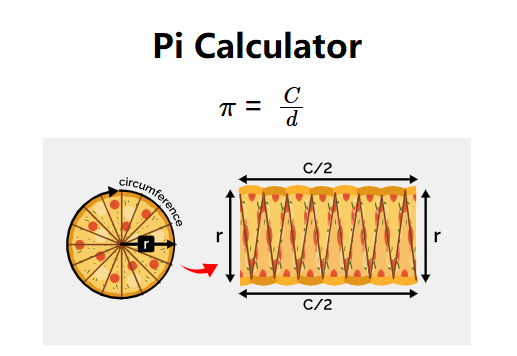 Home
Home
 Back
Back

Definition: This calculator estimates the mathematical constant π (pi), which is the ratio of a circle's circumference to its diameter, approximately 3.14159. It uses the direct measurement method by dividing the circumference by the diameter.
Purpose: It allows users to experimentally estimate π by measuring a circular object's circumference and diameter in inches (in) or centimeters (cm), compare it with the actual value, and learn about historical estimates like Archimedes' Theorem.
The calculator estimates π using the fundamental geometric relationship:
where \( C \) is the circumference and \( d \) is the diameter of a circular object, both measured in the same unit (inches or centimeters).
Steps:
Pi (π) is crucial for:
Example 1 (Circular Object in Inches): Estimate π with a circumference of 62.8 inches and a diameter of 20 inches:
Example 2 (Circular Object in Centimeters): Estimate π with a circumference of 78.5 cm and a diameter of 25 cm:
Q: Why must circumference and diameter use the same unit (in or cm)?
A: The ratio \( \pi = \frac{C}{d} \) is unitless, so both measurements must be in the same unit (inches or centimeters) to ensure the calculation is correct.
Q: Why is the percentage difference sometimes large?
A: The estimate depends on the accuracy of the measurements. Small errors in measuring circumference or diameter can lead to significant deviations from the actual value of π.
Q: What is the significance of the Archimedes' estimate in the result?
A: Archimedes approximated π as between \( 3\frac{10}{71} \) and \( 3\frac{1}{7} \), with \( \frac{25}{12} \) (approximately 2.0833) being a simplified historical estimate for comparison.